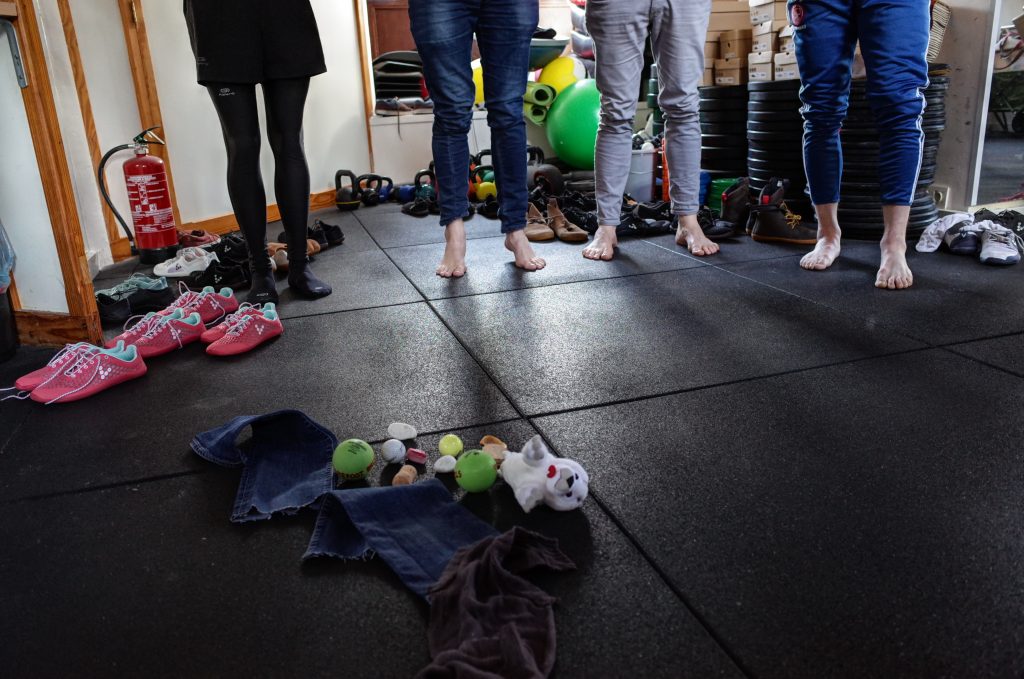If you’re like me, you probably have been using conventional shoes for a major part of your life. Depending on age, it could be for the past 20, 30,40, 50 years.
You may not believe it, but your shoes have changed you during all that time. Like the proverbial frog in hot water.
Good news is, you can transition to minimalist shoes and get your feet back. There are some simple rules that experience has taught me, that will help avoid the injuries or the pains associated with your feet and body going back to its natural state.
- The First shoe is key.
Choose a shoe that you can wear for the longest time during the day. If you’re most of the time in the office, replace one of your office shoes. If you work in the health & fitness business, a sport shoe may be more appropriate. If you’re at home with kids, casual shoes for those walks to the grocery or school or day care is better.
- Take 10-15 minutes a day to exercise your feet.
Using minimalist shoes will already stimulate your feet to be active when moving about. However, active stimulation will accelerate waking up those sleeping feet. There are several basic Toe Yoga exercises we recommend doing.
- Walk, squat, jump, run in good technique.
Conventional over-protective shoes will likely have altered your technique.
The most efficient walking technique uses a smooth rolling motion from heel to toe. Using all the surface of the feet during the roll will be more gentle on the body and create an efficient stride. You’ll know if you’re doing it wrong when you hear your foot slap the ground.
Learning to squat in full range of motion will help stretch the Achilles tendon back to normal length.
Tried jumping rope? It’s a nice dynamic exercise to be mindful of how you should position the feet in landing during running. Make sure that you land on your forefoot/midfoot and let the heel touch at the end of the cycle. Touching the heel at the end of the cycle rests the calf muscles so you can do the exercise for longer.
Run the natural way. Landing on the forefoot/midfoot and touching the heel at the end of the cycle. Don’t over stride. Running is best learned with a professional who can help review your technique. We recommend finding barefoot running/pose running/ chi running coaches.
- Listen to your body.
Depending on your age, physical condition and activity, transitioning to barefoot shoes requires knowing ones limits. It’s easy to overdo it when one is excited about the sudden feeling of freedom of movement.
- Give it time.
If you’ve been wearing conventional shoes for 20 to 50 years, expecting your body to adapt in 2-weeks is unreasonable. Your body needs to regenerate the body parts that have changed during all that time. As a rule of thumb, start with 6-12-18 months before you can wear only minimalist shoes. But it is possible to start wearing the shoes right now. Make the change immediately to get the benefits immediately.


Comments
I am interested but I have flat feet. Is this recommended? If so, please direct me to good sources of information. Because the shoes are expensive and don’t want to make that kind of mistake.
Kind regards
Jean-Philippe Depoortere
Every foot is different and you’ll have to experiment to know what works. From our experience, barefoot shoes are good for flat feet as it will help with foot mobility and proprioception while in the shoes. You’ll find more info in our Blog -> Library section. Or better yet, drop by the shop if you’re in Brussels. We can give you tips and tricks to get started before investing in the shoes.
The nerve endings in my feet have been extensively damaged by chemotherapy. I am looking for shoes which will give me as much feeling as possible while still protecting my feet. Do you have any suggestions ?
Ik ben 66 jaar en heb doorgezakte voeten. Ik kan niet zonder steunzolen. Kan ik door training mijn voeten verbeteren ?